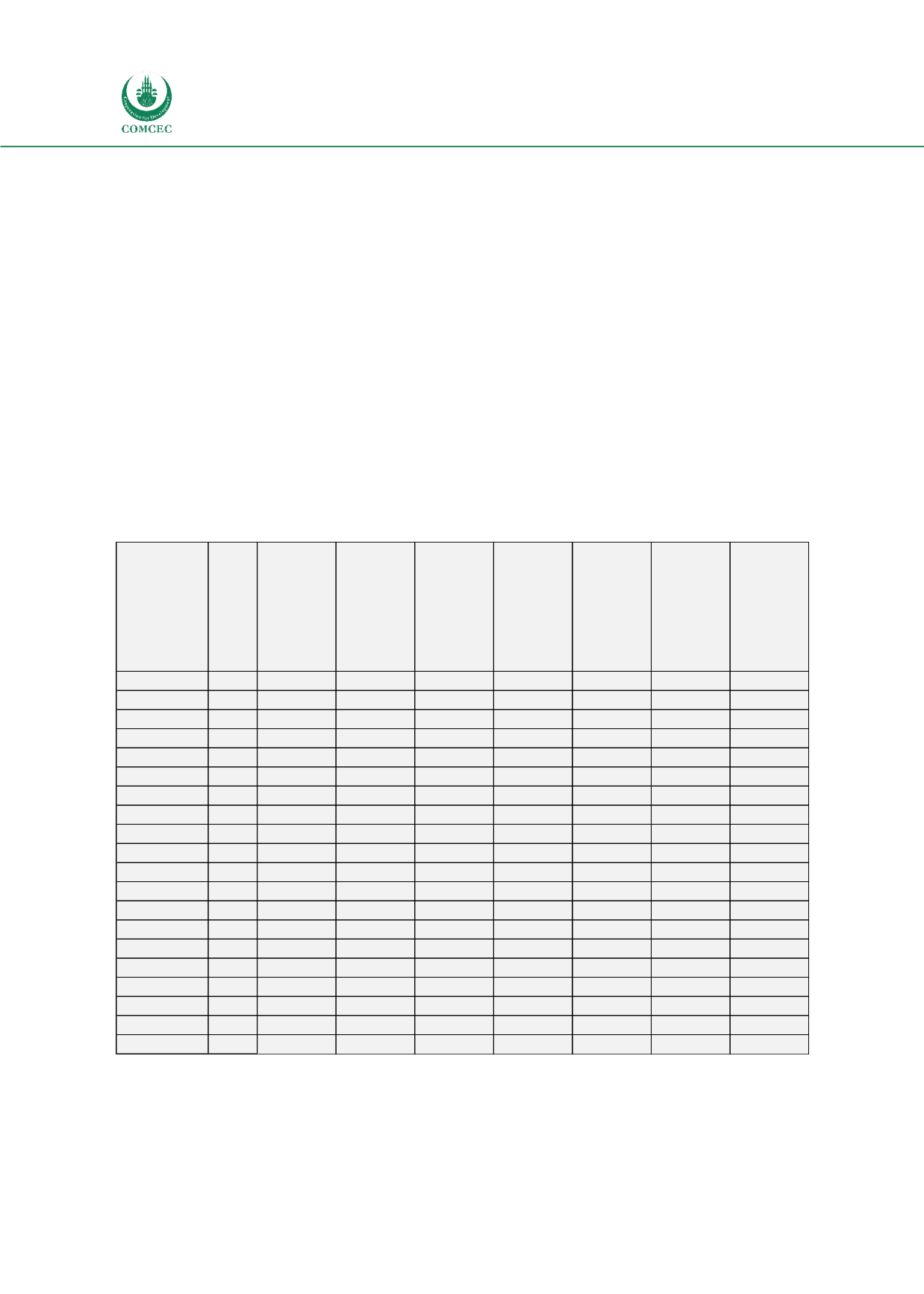

Improving the Border Agency Cooperation
Among the OIC Member States for Facilitating Trade
64
Countries in the African region have a relatively low level of competitiveness. Their average
overall World Economic Forum global competitiveness index is only 3.4, which would make
them the 126th in the country ranks (among the 140 countries). Among the African region,
Nigeria has the highest overall logistics performance index, but takes only the 75th place in the
global ranking. The African country average is 2.47, which is slightly lower than in the other
two regions. Table below shows the key indicators for the 17 African countries in regards to
BAC activities.
Regarding their foreign trade, the African countries are much behind the other two regions.
The average export and import per capita are very low, only 515 USD and 352 USD,
respectively. In fact, the export per capita exceeds 1,000 USD in only one country, Gabon.
However, there is an export surplus driven by Nigeria and a few other countries. Also the
average GDP per capita is significantly lower in the African countries when compared to the
Arab and Asian regions. In the Doing Business study, Uganda has the shortest distance to
frontier (DTF) at 56.6%. The average for the African countries is 47.8%. In the trading across
borders indicator, Mali scores highest with 74.0%, while the average remains at 50.0%.
Table 8. Key indicators related to BAC activities in the OIC member states in the African
region
Sources CIA World Factbook, World Bank, OECD
The average for the Customs index of World Bank’s LPI is 2.30, with Benin having the top score
of 2.64 and Senegal following close behind at 2.61. In the OECD Trade facilitation indicator, the
average for external cooperation is 0.82, which is lowest of the three COMCEC regions. The
Country
Group
Number of
international
agreements
affiliated
Imports per
capita (USD)
Exports per
capita (USD)
Customs
indicator /
World Bank
Logistics
Performance
Index (0-5)
Trading
Across
Borders DTF
(% points) /
World Bank
Doing
Business
study
Co-operation
– External /
OECD Trade
Facilitation
Indicators (0-
2)
Co-operation
– Internal /
OECD Trade
Facilitation
Indicators (0-
2)
Afghanistan Asian
9
374
82
2,16 28,90 % data n/a data n/a
Albania
Asian
13
1 733
803 data n/a 91,61 %
1,67
1,00
Azerbaijan Asian
11
953
2 887
2,57 69,59 %
1,50
1,33
Benin
African
8
262
205
2,64 61,54 %
1,74
0,00
Burkina Faso African
8
139
126
2,50 65,31 %
0,00
2,00
Cameroon African
9
273
254
1,86 15,99 %
1,33
0,67
Chad
African
7
380
431
2,46 38,19 %
1,74
2,00
Cote d’Ivoire African
12
426
549
2,33 54,42 %
0,00
1,00
Gabon
African
8
1 811
5 202
2,00 39,84 %
0,00
1,00
Gambia
African
7
170
63
2,06 65,27 %
0,00
2,00
Guinea
African
7
185
150
2,34 43,02 % data n/a data n/a
Guinea-Bissau African
7
132
100
2,43 50,58 % data n/a data n/a
Mali
African
11
185
133
2,08 73,98 %
0,00
2,00
Mozambique African
9
315
155
2,26 58,20 %
2,00
1,00
Niger
African
12
120
81
2,49 44,35 %
0,00
0,00
Nigeria
African
11
339
455
2,35 18,05 %
1,00
0,67
Senegal
African
10
408
192
2,61 62,05 %
1,00
1,00
Sierra Leone African
9
311
355 data n/a 42,07 %
0,00
1,00
Togo
African
9
398
240
2,09 59,33 %
1,74
1,00
Uganda
African
10
138
74 data n/a 58,60 %
1,75
1,00
















